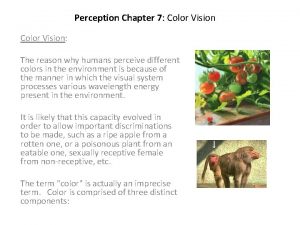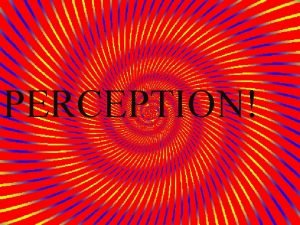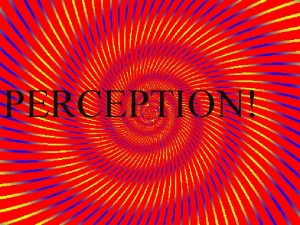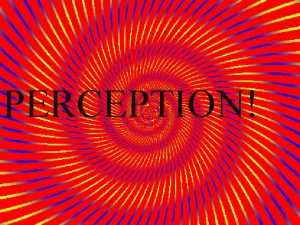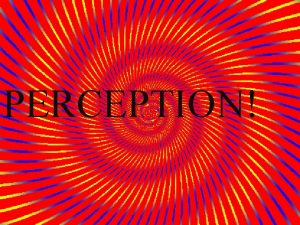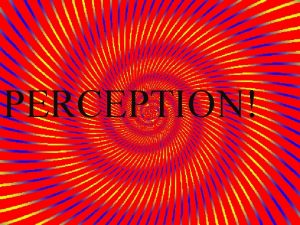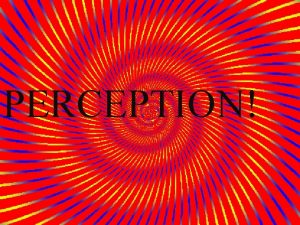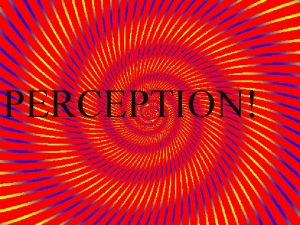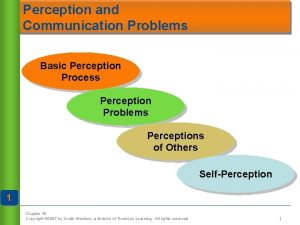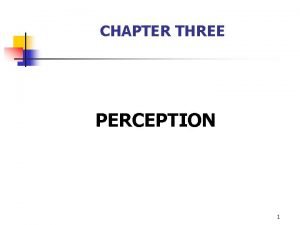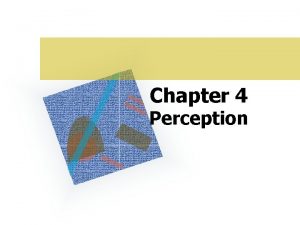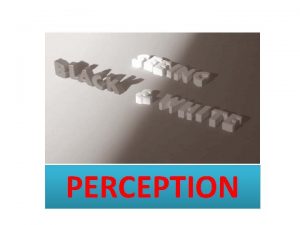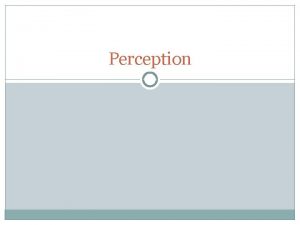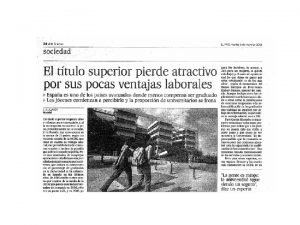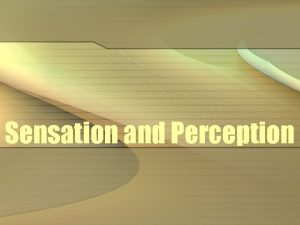Perception of the world and a sense of


















































- Slides: 50

Perception of the world and a sense of beauty in Japanese culture/design Lecture 6

The Nihonjinron phenomenon �The Nihonjinron is specificity of national identity. Literally it means “to think about Japanese, think in Japanese” �Kosaki Yoshino highlights a basic concept for ideas about Japanese uniqueness: a unique model of interpersonal communication, based on silence, illogicality, ambiguity, situational ethics and emotionality of speech

V. M. Alpatov: “Language myths” �Special attention to one's own language and its problems �The idea on the uniqueness of the Japanese language �Exaggeration of the difficulty of the Japanese language ("Japanese language - for the Japanese) �The idea on the special reachness, diversity of the Japanese language and the emphasis on the "culture of silence" that distinguishes the Japanese language from other languages.

Human/culture/nature �For Europeans, nature is the antithesis of urban space, from which it defends itself (the idea of a landscape). �For Japanese, nature is the habitat. They adapt human life to nature, but does not rebuild nature for their own purpose. �In architecture: not to compete with nature, but to strive to become the part of it

Human/culture/nature � There are no clear boundaries between the internal and external interior (sliding screens, house and garden) in Japanese houses. � There is no rigid antithesis of nature // culture (landscape lyrics, painting, landscape art, Ikebana, stone garden, bonsai, sakei, bonsacki, bonkai)

Japanese house �The house has no walls. Landscape is a natural extension of the interior. From the inside the house is divided not into the rooms, but into the functional areas (with the help of screens, curtains, due to differences in the level of the floor). �The basis of the Japanese interior is emptiness, emphasizing the inner elegance of the little that is in the house. �Therefore, the fundamental feature of the Japanese style is minimalism.

doors-partitions made from paper and bamboo (shoji)

The screens make the apartment space light and transparent

The traditional house

Modern interior

Modern interior

Modern interior

Stone garden

Stone garden

Ikebana – the art of flower’s design

Ohara school

Ikebana

Bonsai �Bonsai literally translates from Japanese as "grown in a tray" and involves the process of growing an exact copy of a large tree of a certain type in miniature.

Bonsai

Bonsaki � Bonsaki - literally means "tray-stone. " It is the art of depicting a miniature landscape (mountains, seas, lakes, waterfalls) on a flat, usually black, using sand, gravel and stones. Bonsaki is a temporary composition that is created for the wedding, the New Year or some ceremony.

Saikei/Bonkei

Japanese Professional Design �Professional design in Japan has no more than 60 years. The main stimulus for its development seems to be the special economic conditions that prevailed in Japan in the post-war period. �For several decades, Japanese design came out on top in the world. Its development is just as rapid as the general process of Japan's postwar industrialization.

Japanese Professional Design �Since the early 1950's. The Japanese Association for the Promotion of Export Trade Development, JETHRO regularly sent Japanese designers to study at the highest art and design schools in the US and Germany (Chicago, Los Angeles, Ulm). � Many designers regularly trained in the US, Italy, France, England, Scandinavian countries, getting acquainted with the latest design achievements.

SONY �Modern electronics, which is so famous for Japan, in the period of the formation of Japanese design was completely new for the country's field of production, not related to the past neither functions nor forms. But it became the most mass field of practice of Japanese design �"In the evening of May 7, 1946, about twenty people gathered on the fourth floor of a charred department store in the war-devastated center of Tokyo, "

SONY � "Sony" is famous for the harmonious combination of the latest scientific and technical achievements in its products with highly professional design. � Akio Morita (1921 -1999), responsible for the commercial activities of the firm, described the history of its creation and recovery. He showed himself as a talented engineer and designer.



The first corporate symbolism: the circle of red color symbolized the rising Sun, the blue color the sky. The slogan of that time - "Sincerity brings success. "


NISSAN � In 1928, Yoshisuke Aikawa (1880 -1967) received an offer to lead the restructuring of the firm Kuhara Kogyo. � One of the first steps of Aikawa was the choice of a new name. He called the renewed company Nihon Sangyo (Nihon - Japan, Sangyo - industry). � He believed that since the company belongs to shareholders from all over Japan, it should also reflect the interests of Japanese society in its name

Nissan — model Type 70. , 1939

Nissan Silvia Q‘s, 1988

NISSAN



Kenji Ekuan (born in 1929) � Kenji Ekuan (born in 1929) is a prominent Japanese designer, the president of the Association of Japanese Designers, president of ICSID � «The creative thought of Japanese designers develops in the sphere of three vital problems: � lack of territory, � overpopulation and � traditions of spiritual culture. "

Kenji Ekuan �The first design principle is "less is more". In terms of design, this means: with minimal means should be achieved the highest technical and aesthetic qualities of the product, which will constitute its special "strength. " The second principle is multifunctionality, which he refers to as "the simplicity of the complex" (or "complex simplicity"). �Most things in the Japanese way of life are like that they are constructively simple, they correspond to a wide range of functions.

Kikkoman soy sauce dispenser

Komachi Bullet Train

HONDA SPACEY 125

Sofa Stratos, Makio Hasuike

Architecture: Japanese architectural studio Shuhei Endo succeeded in combining advanced design techniques with the traditions of Japanese culture, having built an environmental center for studying the environment in the Japanese prefecture of Hyogo.

Tadao Ando. Church of the Light, 1989

Makoto Tanjiri, brand store Diesel

Sori Yanagi

Stool-chair "Butterfly

Tashinomi (bars where you can only stand) - a signboard

Yumi Katsura

Isi Miyaki

Jitaro Saito
 Sense perception tok
Sense perception tok Dominant genetic variance
Dominant genetic variance Narrow sense heritability vs broad sense heritability
Narrow sense heritability vs broad sense heritability Hình ảnh bộ gõ cơ thể búng tay
Hình ảnh bộ gõ cơ thể búng tay Ng-html
Ng-html Bổ thể
Bổ thể Tỉ lệ cơ thể trẻ em
Tỉ lệ cơ thể trẻ em Chó sói
Chó sói Glasgow thang điểm
Glasgow thang điểm Chúa sống lại
Chúa sống lại Môn thể thao bắt đầu bằng chữ đua
Môn thể thao bắt đầu bằng chữ đua Thế nào là hệ số cao nhất
Thế nào là hệ số cao nhất Các châu lục và đại dương trên thế giới
Các châu lục và đại dương trên thế giới Công thức tính độ biến thiên đông lượng
Công thức tính độ biến thiên đông lượng Trời xanh đây là của chúng ta thể thơ
Trời xanh đây là của chúng ta thể thơ Cách giải mật thư tọa độ
Cách giải mật thư tọa độ 101012 bằng
101012 bằng độ dài liên kết
độ dài liên kết Các châu lục và đại dương trên thế giới
Các châu lục và đại dương trên thế giới Thơ thất ngôn tứ tuyệt đường luật
Thơ thất ngôn tứ tuyệt đường luật Quá trình desamine hóa có thể tạo ra
Quá trình desamine hóa có thể tạo ra Một số thể thơ truyền thống
Một số thể thơ truyền thống Cái miệng xinh xinh thế chỉ nói điều hay thôi
Cái miệng xinh xinh thế chỉ nói điều hay thôi Vẽ hình chiếu vuông góc của vật thể sau
Vẽ hình chiếu vuông góc của vật thể sau Biện pháp chống mỏi cơ
Biện pháp chống mỏi cơ đặc điểm cơ thể của người tối cổ
đặc điểm cơ thể của người tối cổ Giọng cùng tên là
Giọng cùng tên là Vẽ hình chiếu đứng bằng cạnh của vật thể
Vẽ hình chiếu đứng bằng cạnh của vật thể Vẽ hình chiếu vuông góc của vật thể sau
Vẽ hình chiếu vuông góc của vật thể sau Thẻ vin
Thẻ vin đại từ thay thế
đại từ thay thế điện thế nghỉ
điện thế nghỉ Tư thế ngồi viết
Tư thế ngồi viết Diễn thế sinh thái là
Diễn thế sinh thái là Các loại đột biến cấu trúc nhiễm sắc thể
Các loại đột biến cấu trúc nhiễm sắc thể So nguyen to
So nguyen to Tư thế ngồi viết
Tư thế ngồi viết Lời thề hippocrates
Lời thề hippocrates Thiếu nhi thế giới liên hoan
Thiếu nhi thế giới liên hoan ưu thế lai là gì
ưu thế lai là gì Hổ đẻ mỗi lứa mấy con
Hổ đẻ mỗi lứa mấy con Sự nuôi và dạy con của hươu
Sự nuôi và dạy con của hươu Hệ hô hấp
Hệ hô hấp Từ ngữ thể hiện lòng nhân hậu
Từ ngữ thể hiện lòng nhân hậu Thế nào là mạng điện lắp đặt kiểu nổi
Thế nào là mạng điện lắp đặt kiểu nổi Chapter 5 sensation and perception
Chapter 5 sensation and perception Chapter 7 vision and perception
Chapter 7 vision and perception Aspek papi kostick
Aspek papi kostick Perception and individual decision making
Perception and individual decision making Law of gestalt
Law of gestalt Eudemonistic model of health
Eudemonistic model of health














































